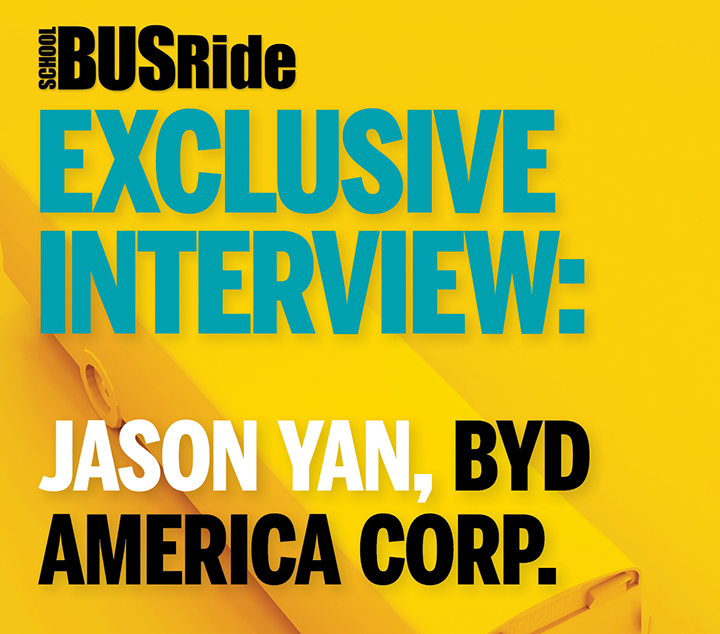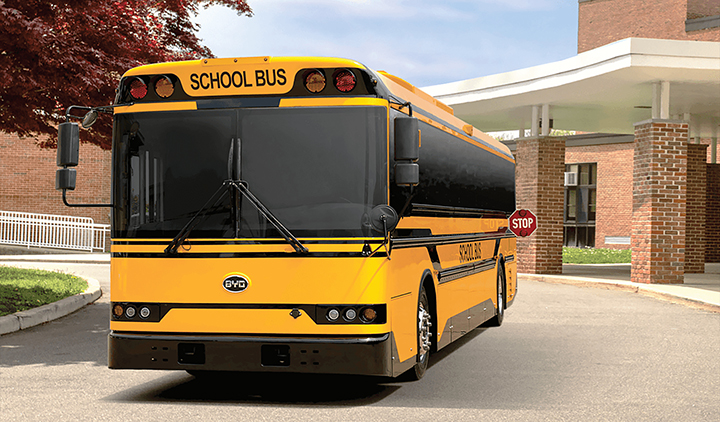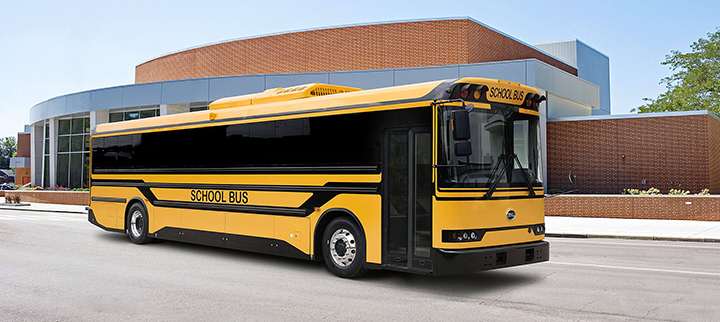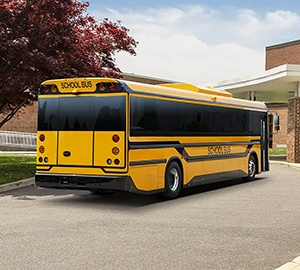
School BUSRide spoke with Jason Yan, director of sales operations for BYD America Corp., about BYD’s perspective on the North American school bus industry. He discussed significant changes, electric vehicle adoption, and how BYD is poised to meet the industry’s newest challenges and opportunities.
During the last five years, what have been the most significant changes in pupil transportation?
The first is the inevitable topic, COVID. In the last two to three years, COVID-19 has really hurt the transportation industry. When the pandemic started, I talked with all of our customers in the public and private sectors of the industry and, on average, their ridership had decreased from 30 percent to 70 percent.
In terms of the private sectors, the shuttle fleet size, and even a lot of the shuttle routes have been totally eliminated because those big customers, corporations like Silicon Valley, are transitioning to 100 percent work from home, so the shuttle fleet is no longer necessary, which is very sad to see.

Another thing is green transportation, or zero emission transportation’s rapid development, regardless of public transportation, shuttle fleet, or even individual driving for the passenger vehicles. Previously everyone was utilizing a hybrid setup, now it is moving to pure electric. We can see a lot of the EV brand showing up, whether it is a startup or the older, reputable companies, they are all moving toward electric vehicles. For example, the city of Los Angeles announced a 2035 fully electrified fleet. So, the green transportation and zero emission is definitely the trend for the future.
The last thing is what I call smart driving. As time goes by we can see, regardless if it is passenger vehicle, transit bus, coach bus, or the school bus, there are more and more small systems getting involved. Regardless of route planning, remote monitoring for the vehicle performance, passenger alert, or anonymous driving, the smart systems are starting to get more and more involved in transportation.
Over the next five years, what do you think will be the most significant changes within the pupil transportation industry?
The first is definitely green transportation or zero-emission transportation, especially with the government infrastructure bill, and different funding support, whether that is federal, state or city. More and more the electric buses will be deployed along with the green infrastructure. That will definitely be the major topic over the next five years.
The second thin is anonymous driving. I know in a lot of states like Michigan and Texas, there is a lot of testing for anonymous driving vehicles and buses. As you can see for the passenger vehicle industry, the level two and level three anonymous driving has already deployed to those vehicles. So, anonymous driving will be second major topic in the next five years.
The third thing would definitely be the school bus industry. In past years, most of the funding support and the charter infrastructure were focused on supporting public transportation, but from what we can see over the past couple of years, the green transportation support for the school bus is quickly growing.
For example, in 2022 California announced a program to benefit small and medium sized school districts to help them to electrify their school bus fleets. This community – students, teachers, and students’ families – they all want to have a better environment for the kids and for the entire community.

How is BYD positioned to meet those changes?
BYD is the one of the largest electric vehicle manufacturers globally, and we are continuously developing or releasing new products to the industry, especially for the school bus industry. For example, mid last year we announced our Type D electric school bus model and we have signed a contract with the customer and we will start delivering those buses later this year.
At the beginning of this year we announced our Type A electric school bus model and we will have more and more models announced and released for the school bus industry. Meanwhile, because BYD has a unique battery technology and vertical integration for the electric bus, we are not an assembler but we are working with a partner to do vehicle-to-grid.
This is a significant solution for school districts or private operators for the school district. As we know, the school bus is operating in the morning and afternoon with a lot of down time in between. Once the BYD school bus is equipped with the V2G function it can feed the grid with the power from the bus, optimizing the electricity bill for the school district and helping to protect the grid power and the grid load. It will be the perfect solution for the electric school bus.
Additionally, BYD has begun to deploy new technology to our school buses; student alerts, pedestrian alerts, back view, 360 degree cameras, etc. So everything that we are doing is working to provide the driver and community with a better driving experience and environment. And of course, to guarantee a safer ridership experience for students.
Regarding EVs, how do you see adoption in the school bus industry progressing in the near future? What are the hurdles that districts must overcome on the road to EV adoption?
First of all, we need to have better planning and provide each school district with an expert to help them do that. Right now, based on the operation and the requirements, using one electric bus to replace a diesel bus is definitely not a problem. There is no mileage concern because based on the current battery technology, the daily operation can definitely meet the school bus requirement. The only thing is we need to have better planning and make sure that each route is better planned.
The second thing is setting up the charter infrastructure. That is one of the biggest challenges for school districts, but as long as they have a plan up front and can work with the utility company, the charter company, and the OEMs it will go much smoother. For example, BYD is always happy to provide the turnkey solution for the charter infrastructure for the school district. Of course, we will always monitor the funding availability, whether it’s federal, state or city. Obviously, it is always better to get the funding support before you start the pilot project, or even expand the fleet.
 Many large states – like New York – and large districts – like Baltimore County – recently unveiled mandates and incentives to move forward with electric school buses. Do you feel that “big moves” like this will provide an impetus for other cities, districts, and states to follow suit?
Many large states – like New York – and large districts – like Baltimore County – recently unveiled mandates and incentives to move forward with electric school buses. Do you feel that “big moves” like this will provide an impetus for other cities, districts, and states to follow suit?
Yes, absolutely. We need a showcase, no matter where it is – New York, California, Florida or Washington – we definitely need a showcase. We need to prove to the other states and to the entire nation that this solution works. We need to protect the environment, protect this planet, and to improve the community’s environment. I think the encouragement, or the incentive programs for those big states, like California, will definitely be the showcase and encouragement other states need in order to follow suit and start the fleet electrification process.
What technological advancement do you feel is most important in propelling pupil transportation into the future?
I think the first thing for the future is definitely safety. Regardless of how long the bus can drive, how many hours the bus can last, safety is always the biggest constraint. Not only the driver’s safety, but the 20, 40, 50, even 80 students inside the bus. That will always be the biggest concern and will definitely be a major consideration looking into the future.
Second is technology. When a school district selects a product, it is better to have the comprehensive consideration to ensure the product selected has a safety guarantee. The key technology for the pupil industry is really the V2G. Because of the unique operations of a school bus, they operate in the morning and the afternoon, but in between there is a 6, 7-hour window when the bus is parked in the yard, totally inactive. So, to have the bus charged at the off-peak rate and feed the grid at the peak time, that is the most important thing, especially for the large fleet.


